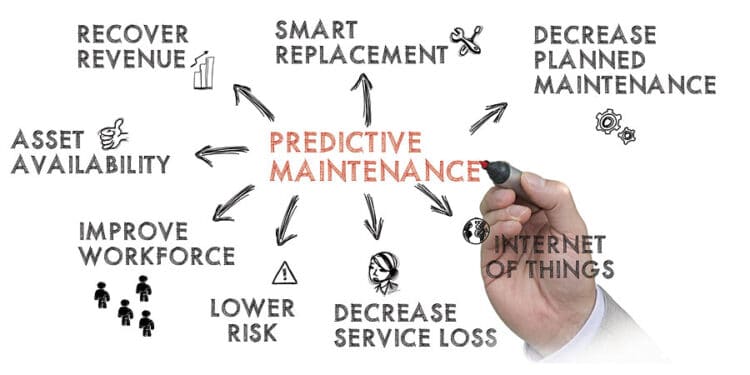Predictive maintenance platforms keep an eye on the condition of the machine, and its parts. Moreover, tells you before time which machine is going to fail or stop. This platform helps you to avoid such issues from happening.
Maintenance and assistance contribute much to the whole cost of the manufacturing system. As it contributes up to 70% of the total cost. This article gives an analysis of approaches, importance, procedures, and equipment used in predictive maintenance. In the manufacturing network, these are used to form a solid predictive maintenance platform.
On How Many Pillars Does A Predictive Maintenance Platform Stand?
A predictive maintenance platform stands on three pillars. These are:
- Data acquisition and analysis.
- Knowledge maintenance.
- Sustainable maintenance dashboard.
What Are The Functions Of These Pillars?
Below are the major functions of the pillars of the predictive maintenance platform:
First Pillar:
The first pillar focuses on the acquisition of the relevant data and further processing.
Second Pillar:
The second pillar is responsible for the maintenance of knowledge. Also focuses on the presentation of the knowledge.
Third Pillar:
The third pillar is responsible for advising on the maintenance schemes. It particularly pays attention to highlight the environmental and energy performances.
Why Predictive Maintenance Platform Is Important?
A predictive maintenance platform is very important because it is improving the maintenance and trustability of a system. Benefits of this platform are:
- It lessens the number of unpredicted failures.
- It upgrades the asset operating time as well as enhances asset reliability.
- When it is essential, use maintenance to lessen the operational expenditures.
- It will enhance the production hours.
- This platform improves security.
- Further, allow you to control streamline maintenance expenditures. This can be done by reducing labor, tools, and listing costs.
What Does Productive Maintenance Platform Do?
The productive Maintenance platform evaluates that which part of the machine might fail so, that preventive measures can be taken before time to avoid such failure. The platform uses data science and a predictive analytical process to evaluate such issues.
Its main purpose is to plan the easiest and affordable maintenance at an efficient time. Moreover, it allows increasing the lifespan of the machine to its fullest. It is only possible when the machine is compromised before.
Predictive maintenance platforms use un-destructive procedures for failure estimation. These procedures are acoustic, IR techniques, and sound level estimation. Moreover, the platform also uses a thermal imaging predictive maintenance technique. Through this technique, they measure and collect operations and tools through wireless sensors.
Predictive maintenance platforms provide solutions that predict failure. Thus, they use the following machine learning procedures for measurement estimation maintenance. These procedures are:
- Classification approach.
- Regression approach.
Below Are The Steps Used To Evaluate Failure
Determine the type of machine and failure to be observed.
- Set up the frequency.
- Monitor the condition.
- Then check the report.
- If there is any problem move towards the next step. And if everything is fine go back to the third step.
- To solve the issue from the work order.
- Plan the order.
- Make sure tools and labor must be available.
- Do repairing.
- Then wind up the work order and move back to the third step.
Conclusion:
The above discussion is about the productive maintenance platform that is used to evaluate the failure of a machine before time. So, preventive measures are taken before overcoming this problem. Moreover, also discussed the basic pillars of a predictive maintenance platform and its functions. We also described the importance and working of this platform



